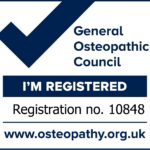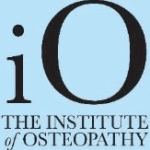Introduction: Overview and support
Chronic pain is a complex and often debilitating condition that affects millions of people worldwide. It is defined as pain that persists for longer than three months and can have a significant impact on a person’s quality of life. While acute pain is a protective response that helps us avoid further injury or damage, chronic pain is a maladaptive response that persists long after the initial injury has healed. In this guide, we will explore the causes, types, symptoms, and available treatments for chronic pain, as well as the physiological and psychological mechanisms that underlie its development and maintenance.
Causes and Types of Chronic Pain
Chronic pain can arise from a wide range of causes, including injury, disease, inflammation, and nerve damage. Some common types of chronic pain include neuropathic pain, musculoskeletal pain, and fibromyalgia. Neuropathic pain results from damage to the nerves that transmit pain signals to the brain, whereas musculoskeletal pain arises from injury or damage to the muscles, joints, or bones. Fibromyalgia is a condition characterized by widespread pain, fatigue, and tenderness that affects the muscles and soft tissues throughout the body.
Physiology of Pain
Pain is a complex sensory experience that involves a network of specialized nerves, receptors, and neurotransmitters. When tissue damage occurs, specialized pain receptors known as nociceptors are activated and send signals to the spinal cord and brain. The spinal cord acts as a gatekeeper, controlling the flow of pain signals to the brain, while the brain processes and interprets the sensory information to create the experience of pain. The pain response is also modulated by various neurotransmitters and neuromodulators, which can either amplify or dampen the pain signal.
Psychology of Pain
The experience of chronic pain is not solely determined by the physical injury or damage. Psychological factors such as anxiety, depression, and stress can also contribute to the development and maintenance of chronic pain. Chronic pain can also cause psychological distress, leading to a vicious cycle of pain and negative emotions. Cognitive-behavioral therapy (CBT) is a commonly used approach that aims to change negative thought patterns and behaviors that can exacerbate pain and improve coping strategies.
Impact on Mental Health and Social Well-Being
Chronic pain can have a significant impact on mental health and social well-being. Individuals with chronic pain are more likely to experience depression, anxiety, and social isolation than those without chronic pain. Chronic pain can also interfere with daily activities such as work, exercise, and leisure, leading to a loss of independence and reduced quality of life.
Available Treatments
There are a variety of treatments available for chronic pain, including medications, osteopathy, and alternative therapies. Medications such as opioids, non-steroidal anti-inflammatory drugs (NSAIDs), and antidepressants can be effective in reducing pain, but also carry risks such as addiction, dependence, and side effects. Physical therapy can help improve mobility, reduce pain, and increase strength and flexibility. Alternative therapies such as acupuncture, massage therapy, and mindfulness-based stress reduction (MBSR) can also be effective in reducing pain and improving well-being.
Practical Strategies for Managing Chronic Pain
Managing chronic pain often requires a multifaceted approach that incorporates both physical and psychological strategies. Self-care activities such as exercise, healthy eating, and getting enough sleep can help reduce pain and improve overall health. Psychological strategies such as mindfulness, relaxation, and cognitive-behavioral therapy can also help improve coping skills and reduce the impact of pain on daily life. Another strategy that may help individuals with chronic pain is biofeedback. Biofeedback is a technique that enables individuals to control certain bodily functions, such as heart rate, blood pressure, and muscle tension, through monitoring and feedback. It can be used to reduce pain, anxiety, and stress by teaching individuals to become more aware of their body’s responses to pain and to control those responses.
Lastly, self-care and self-compassion are crucial components of managing chronic pain. Individuals with chronic pain often experience feelings of frustration, guilt, and shame, which can exacerbate their pain and lead to a negative cycle of emotions and pain. Practicing self-compassion involves being kind and gentle with oneself, acknowledging one’s pain and limitations, and treating oneself with care and respect. This can help individuals to break the cycle of negative emotions and pain, and to cultivate a more positive and accepting attitude towards their pain.
Conclusion:
Chronic pain is a complex and challenging condition that affects millions of individuals worldwide. It can have a significant impact on physical, psychological, and social well-being, and can often be difficult to manage. However, with the right knowledge, support, and strategies, individuals with chronic pain can learn to live a fulfilling and meaningful life.
In this guide, we have discussed the causes, types, symptoms, and available treatments for chronic pain, as well as the physiological and psychological mechanisms of pain, the impact of chronic pain on mental health and social well-being, and practical strategies for managing chronic pain. We have also addressed common misconceptions about chronic pain and provided resources for further support and information.
Remember you do not have to suffer alone. There are healthcare professionals, support groups, and resources available to help you manage your pain and improve your quality of life. Take care of yourself, be kind to yourself, and keep fighting.





Thank you for sharing. It’s important that people don’t feel isolated when suffering pain that doesn’t always have an obvious tissue or injury as a driver.